When I was in the south of France last summer, my family and I spent the day at the Château la Coste winery. This 600-acre property in the Luberon Valley is about a twenty minute drive north from where we were staying in Aix-en-Provence. Being in the epicenter of wine par excellence ensured that this was one of the most memorable days of an already sublime family vacation that began in Paris and ended in Nice.
I am writing about Château la Coste nine months after our visit and well into the Covid-19 pandemic while at home in Queens, NYC with my husband and two kids, ages eleven and seven. In light of all the uncertainty surrounding this global situation, it was a tiny thrill to read on the Château la Coste website that they have recently re-opened to the public. After two months of staying home, it is reassuring to see a cautious re-opening of public spaces here and abroad.
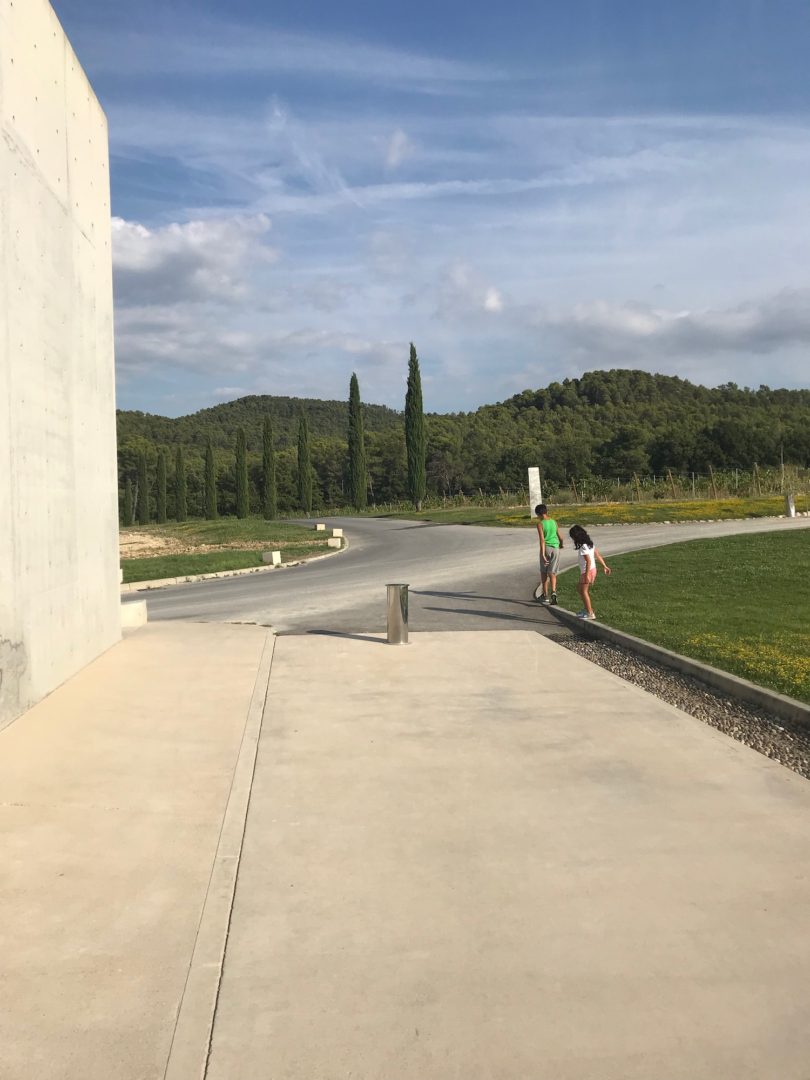

Background
This vineyard dates back to the ancient Romans and has been harvested by a succession of families across the centuries. In 2002, Irish property developer Paddy McKillen purchased this land and opened Château la Coste to the public in 2011. Upon acquisition, the new owner started the process of converting the vineyard into an organic production. In addition, McKillen commissioned world-renown architects to construct buildings to house the winery, four restaurants, art gallery, book store and most recently the five-star hotel Ville la Coste. He also drew from his private art collection and commissioned artists to create site-specific artworks that were installed thoughtfully across this sprawling and beautiful piece of land in the heart of Provence. All of these amenities made for a worthwhile day trip that was not an adults-only kind of experience but one that was easy to incorporate the kids.
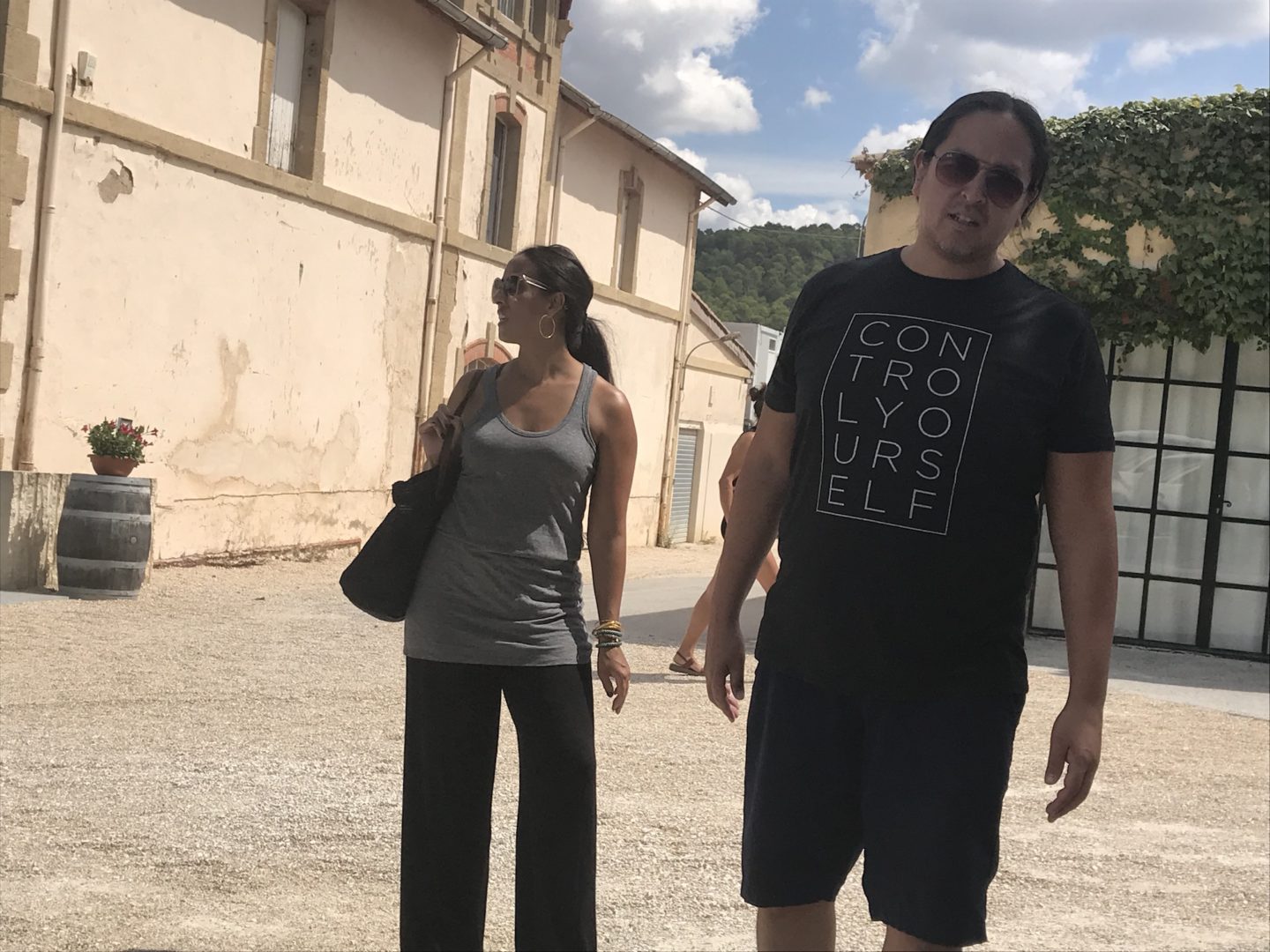
Wine
Under normal circumstances, this winery offers groups tours in English and French. Given that all public spaces are revising their operating procedures, it is probably best to consult the website ahead of time to check for tour availability and scheduling. Prior to our vacation, I reached out via email to château staff members who were very accommodating. They assisted with reserving our tickets for the 1:00 pm tour in English on the day that I had specified as well as patiently explaining our meal options and providing thorough information about touring the property on our own to see the art.
This was our first time as a family to a winery and one of the few times that we joined a group tour of any kind. I have hesitated to sign up for group tours in the past because our kids were younger and we have always had more fun as a family going through museums or other tourist attractions at our own pace while I threw out bits of information along the way. However, a guided tour of a winery was something that my husband and I had been wanting to do for a long time. It was a relief that our kids, who were well-received by our tour guide and the group, also enjoyed touring the facility.
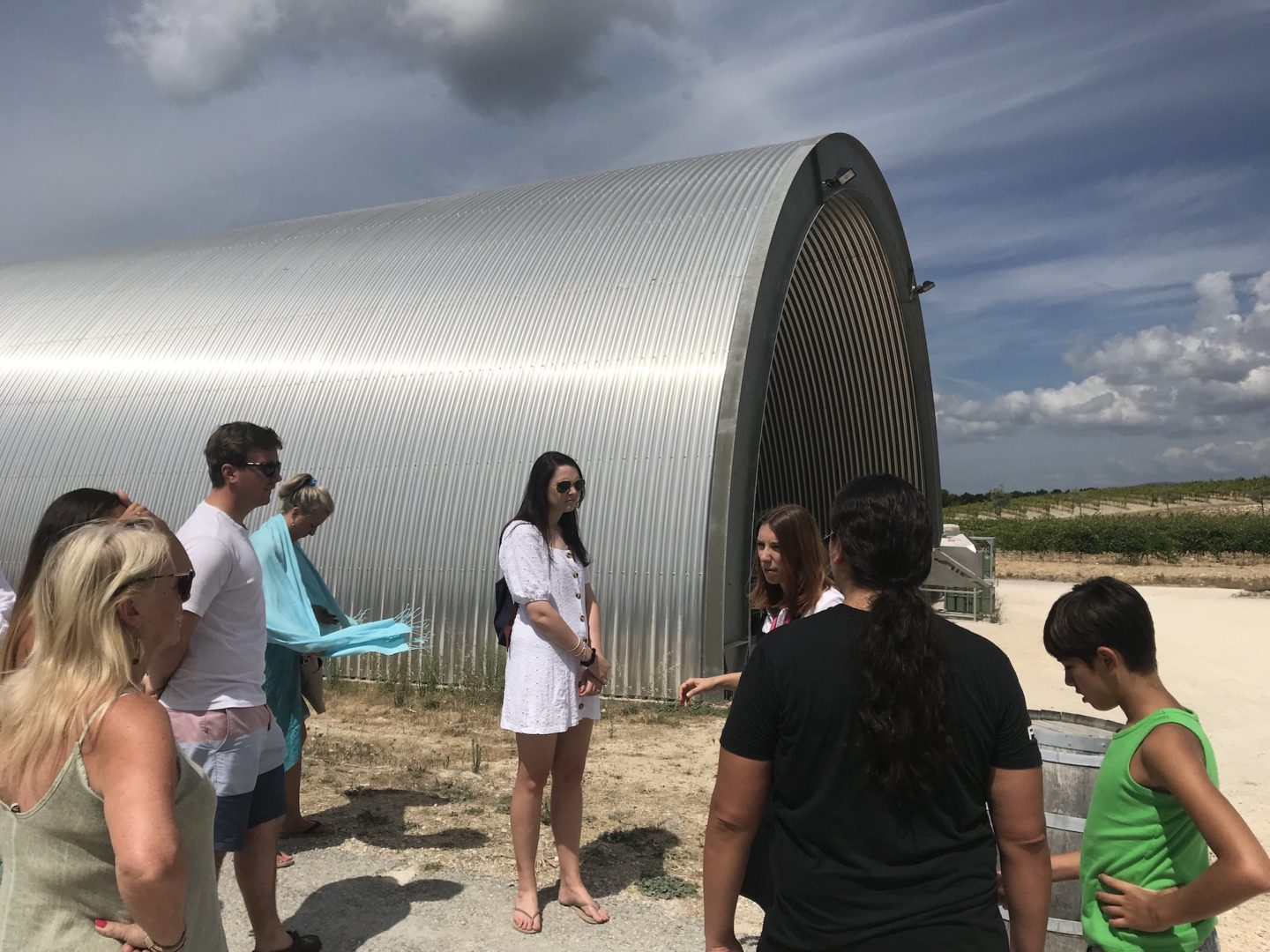

Our small group was led by a knowledgable and personable guide who took us through one of the two buildings designed by French architect Jean Nouvel. He designed a pair of sleek buildings to house a state-of-the-art facility that produces delicious wine. Each building resembles half of an aluminum cylinder that has been sliced down the middle and placed on its flat side. Even though we had always envisioned visiting an ancient wine cellar marked by the passage of time, this shiny new facility did not disappoint.
It was an educational and entertaining experience to walking through and learning more about the process of making wine. We were taken through the various stages of the wine-making process right on through to the final product racing along an automated assembly line. The kids watched with amazement as empty bottles whizzed by on the conveyor belt and were efficiently filled with rosé, corked, sealed, labeled and packaged.
Overall, the tour was a pleasant and engaging experience that was not too technical or too long for either the kids or the adults. It concluded with a tasting that we followed up with the purchase of some bottles to take back to the hotel as well as to be shipped to our home in NY. It cost more to ship the wine than to purchase it but we had to seize this opportunity. Every time we open one of these bottles at home, we are magically transported back to our time in Provence.
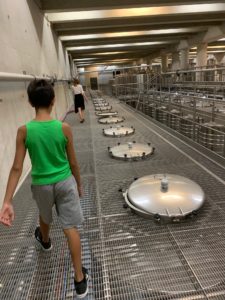
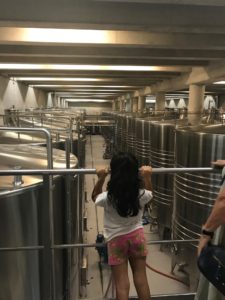
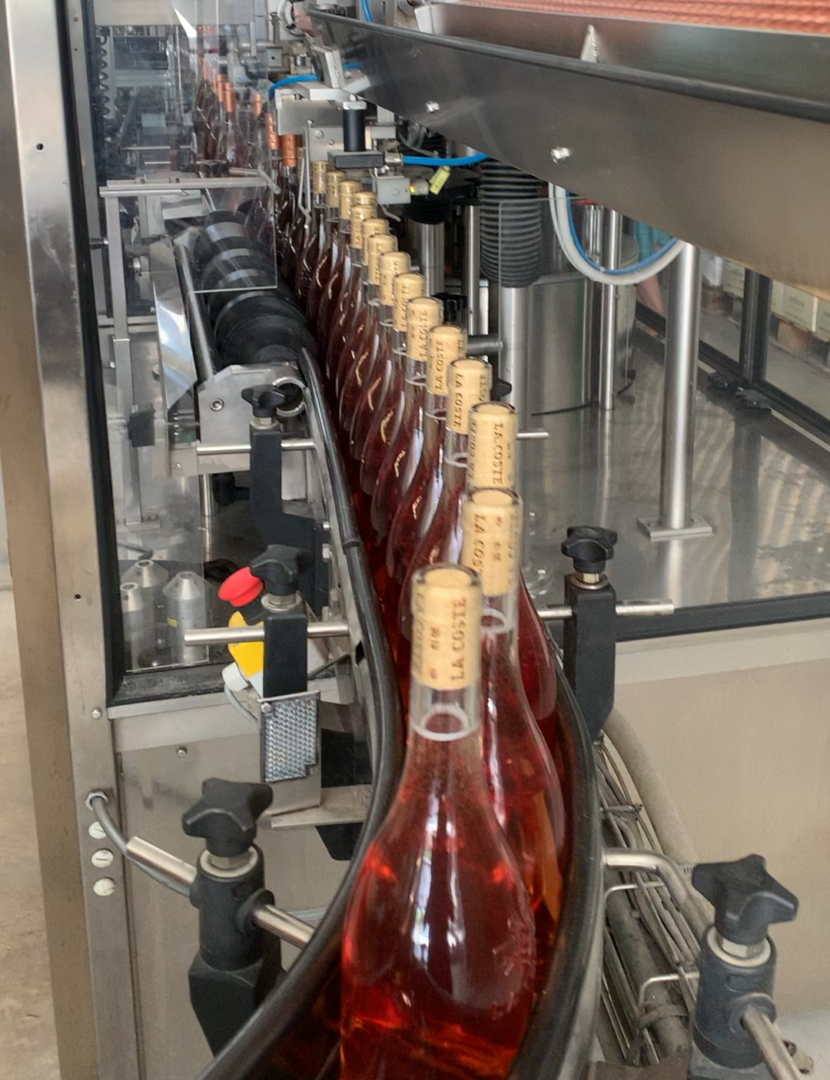
Art & Architecture
After the wine tasting, we walked over to the art gallery where we looked at an installation of Jean-Michel Basquiat works on paper. Then we retraced our steps to the main building referred to as the art center and designed by Japanese architect Tadao Ando where we purchased tickets in the book store to go on the art walk through the vineyard. We were given a user-friendly map that guided us around this sprawling property clearly marking the locations of the artworks. There are guided art walks that run about two hours long but given our preference to explore on our own, the map was sufficient. It was a hot August day and although we did not make it through the entire property, the ground that we did cover favored us with the most magnificent views and intimate encounters with the art along the way. We were alone and crossed paths with just a few other guests which made for a peaceful and mostly private art walk.
As lovely as this experience is, keep in mind that this is a hike through nature with areas of uneven terrain that is best approached with comfortable shoes and attire as well as a bottle of water to fully appreciate this experience.
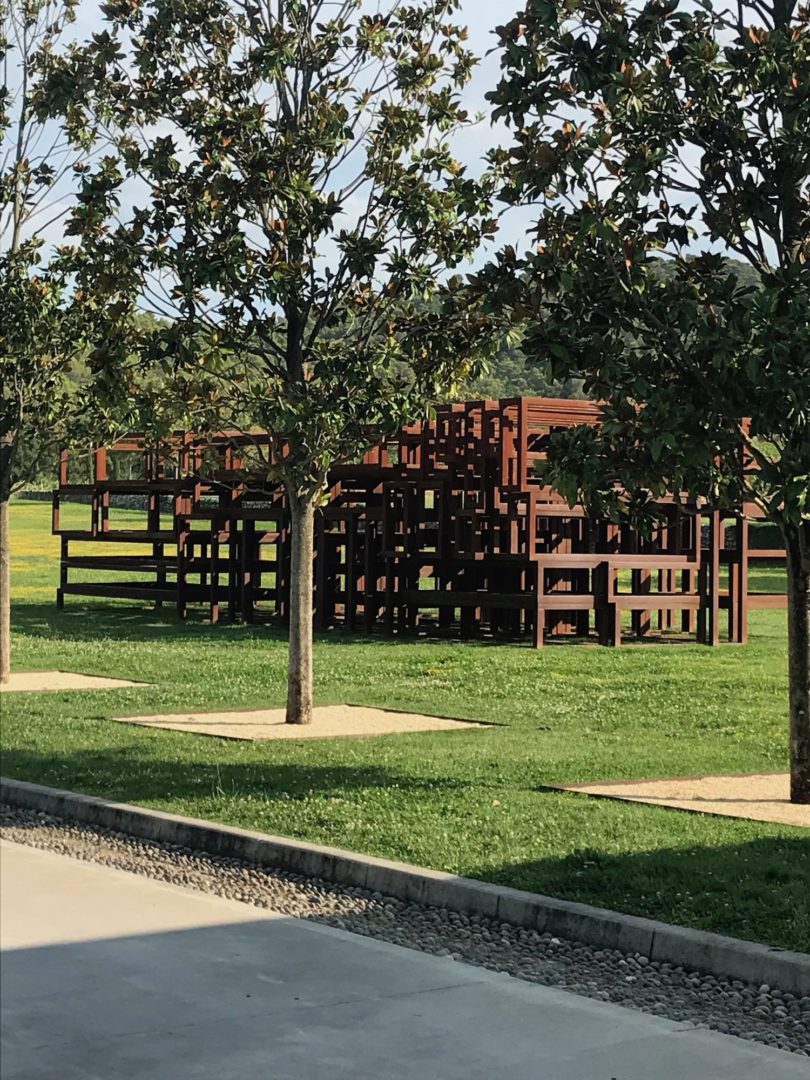
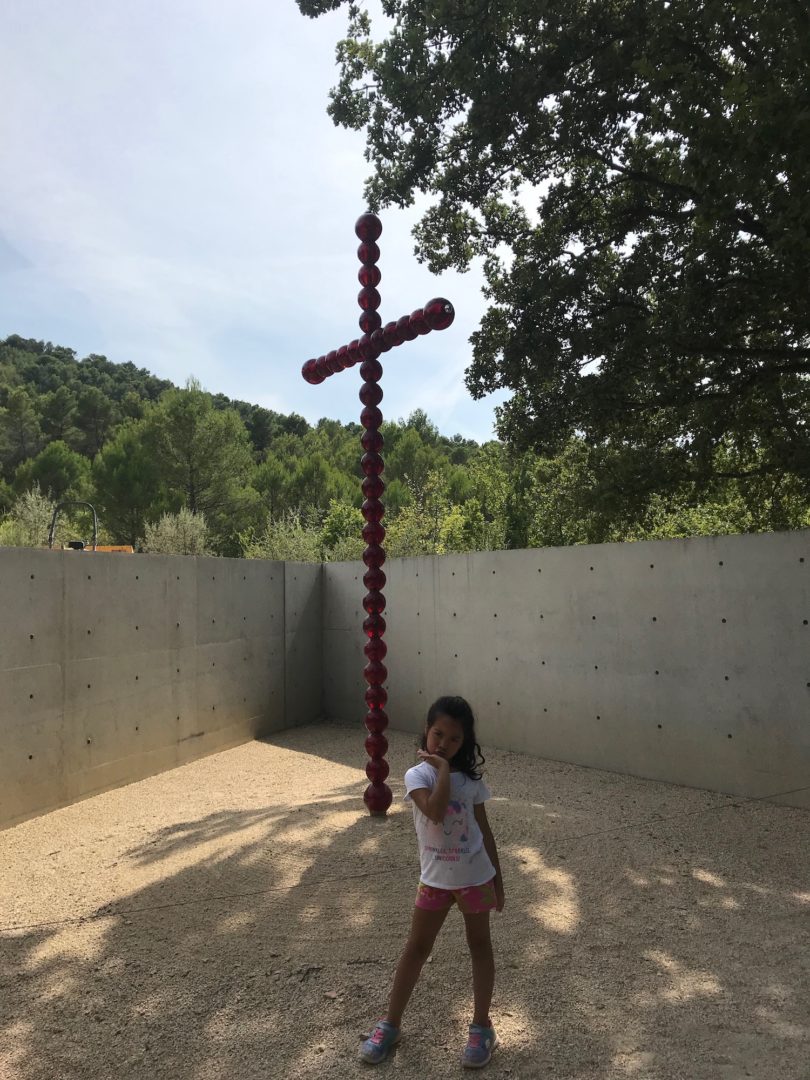

Our art walk started at the Ando art center where we stood in front of Louise Bourgeois’s Crouching Spider (2003). This piece is installed over water and at a removed distance from the viewer. This solitary spider is regal, awe-inspiring and was installed under the direction of the artist just before she passed away in 2010 at the age of 98. On the lawn opposite Bourgeois’s spider is Sean Scully’s Boxes Full of Air (2015) that were also filled with two kids (mine) who could not resist walking into this piece and exploring from within. Further along in the walk, we stepped down into the dark, cool and meditative space of Andy Goldsworthy’s Oak Room (2009); a lovely respite from the heat. We eventually found ourselves before Jean-Michel Othoniel’s La Grande Croix Rouge (2007-2008) and inside Tadao Ando’s La Chapelle (2011); another space for quiet contemplation. The chapel sits high up on a hill where we could appreciate the beauty of the vineyard and the surrounding mountains. Further along the path, we walked onto the platform of Liam Gillick’s Multiplied Resistance Screened (2010) and slid the metal gates that were painted in vibrant colors along their tracks; another fun and interactive artwork for the kids. The map indicated that we were near a set of bronze sculptures, Foxes (2008), by Michael Stipe. Yes, Michael Stipe of R.E.M. This was a fun little discovery considering I was unaware that this music icon had ventured into sculpture.
We finally made our way down to Frank Gehry’s Pavillon de Musique (2008), a dynamic structure of glass, steel and wood. This structure was originally installed in London’s Hyde Park but was transplanted to its current home where it serves as a performance space. We found ourselves sitting in the lawn and watching our kids running through Gehry’s pavilion here in Provence just days after visiting another Gehry creation in Paris, the Fondation Louis Vuitton. In both spaces, we observed daring uses of materials. The numerous beams of the pavilion jut into space haphazardly as if a bunch of sticks were thrown together in a chaotic manner. Lyrical and jarring, this structure stands in a large, open field unencumbered and in contrast to its natural surroundings. This was a satisfying end our art walk through a beautiful and Provençal landscape.
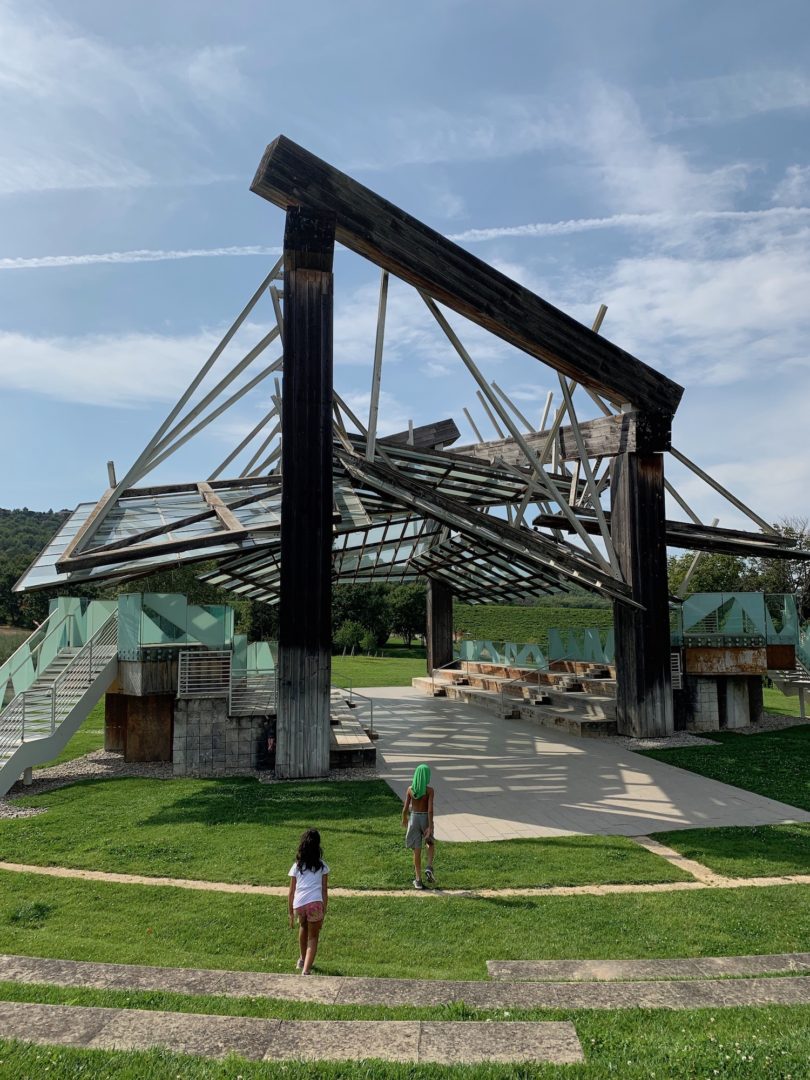
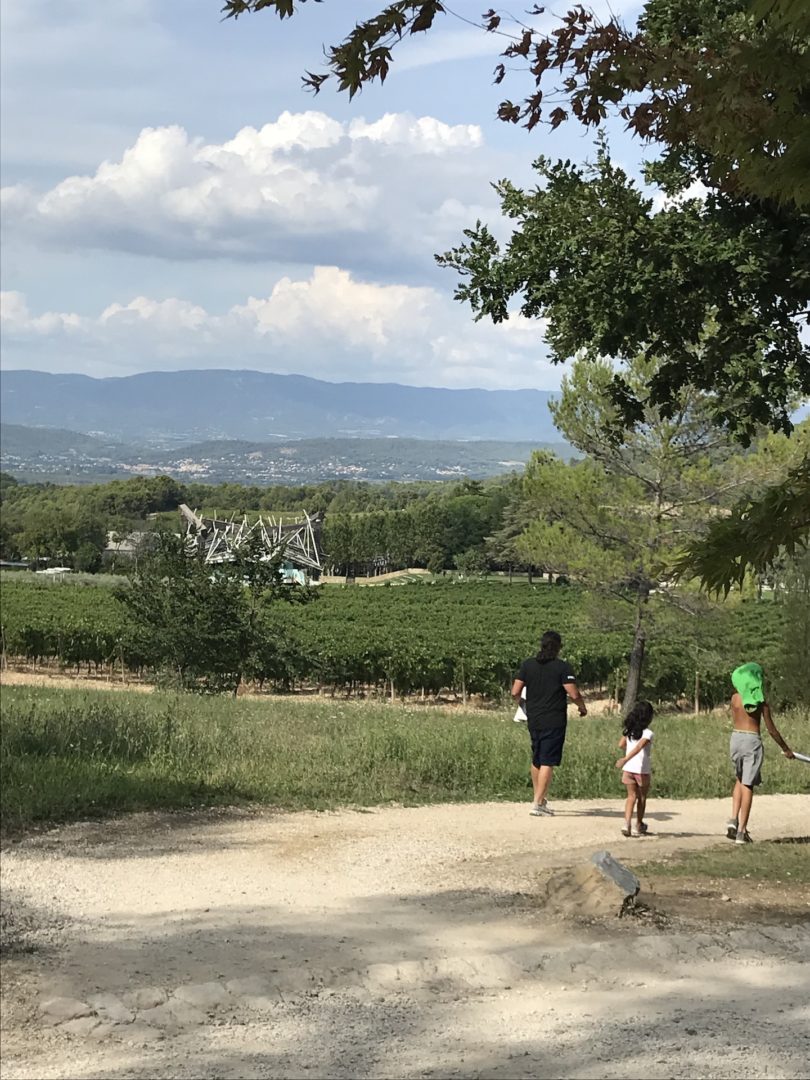
Food
When I was searching for a winery to visit, my main objective was to find one where we could eat a meal with the kids after a wine tour and tasting. I found a number of attractive wineries that offered tours and tastings, but no lunch options. When I discovered Château la Coste, it was a relief to see that there are four restaurants on the premises: the Francis Mallmann restaurant, named for its Argentinian chef and serving dishes of his homeland; the Tadao Ando restaurant, located in the building designed by this Japanese architect and serving local French cuisine; the casual cafe La Terrasse serving a selection of Provençal plates; and the restaurant of the hotel Ville la Coste.
We opted for La Terrasse because the other restaurants required reservations and I thought it would be better to keep our schedule flexible after the wine tour and tasting. This was the best decision because we had time to go on the art walk without feeling rushed. At La Terrasse, we selected dishes made with organic ingredients from the château’s farm. The kids drank the most delicious fresh lemonade and the adults shared a bottle of rosé. This casual yet delicious lunch was an ideal end to a memorable day.

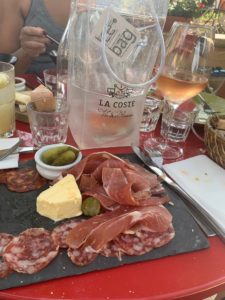
For more about family travel click here.
Click here if you are looking for a little guidance planning your next vacation.





